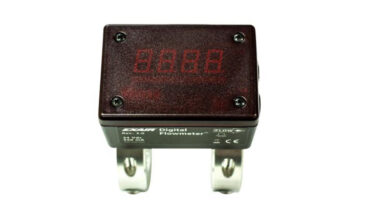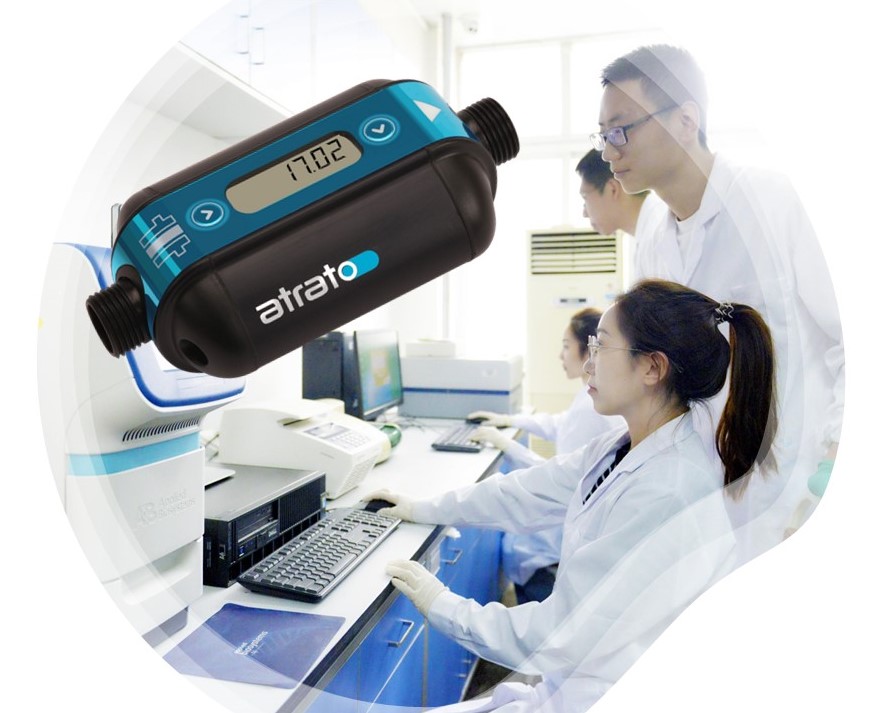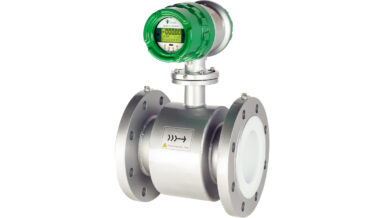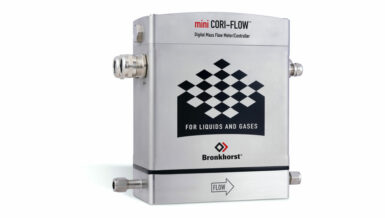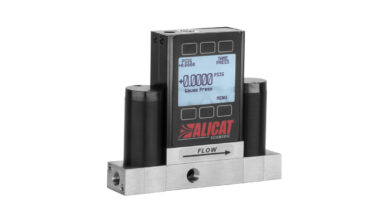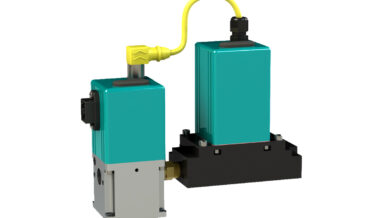Through improved temperature and pressure compensation our flow measurements are even more resistant to the effects of changing temperature and pressure, and a fully redesigned circuit board has increased our signal to noise ratio and enabled higher resolution for raw sensor data sampling. These augmentations have transformed the already-outstanding Alicat mass flow instruments into one of the most accurate differential pressure-based flow measurement systems on the market.
Alicat devices are now more accurate & maintain accuracy to a significantly lower level than ever before

Alicat mass flow instruments’ have been dropped to ±0.6% of reading or ±0.1% of full scale, whichever is greater (with the high accuracy calibration specification dropping to ±0.5% of reading or ±0.1% of full scale)
Over our old flow accuracy specifications of ±(0.8% of reading + 0.2% of full scale) for standard calibration and ±(0.8% of reading + 0.2% of full scale) for high accuracy calibration.
Increased turndown ratio and resolution specifications from 200:1 and 4 total digits to 10,000:1 and 5 total digits and compensation refinements have increased the flow resolution specifications by a factor of ten.
Replace multiple ranged thermal MFC’s with a SINGLE Alicat
Our usable range is significantly higher than competitors; You may be able to use one MFC in your system where two were needed because of the flow range limitations of your current MFCs. For example, if you need to control the flow of O2 between 100 SLPM and 100 SCCM, one Alicat MFC can provide accurate, repeatable control over the entire range. Most thermal based MFCs would require you to have two or more MFCs to complete this same task. This ability leads to:
- Lower overall build cost
- Lower cost of operation
- Less money tied up in inventory for spares/back up units
- Eliminate gas dependent equipment: Select 98+ preset gases with no recal. Less spares required.
- Less complicated setup
- Easy drop-in replacement
Improved Accuracy Means Process Improvements:
- More accurate gas mixing resulting in less wasted gas
- More accurate measurements for R&D leading to better decisions when scaling to production
- Even higher accuracy to perform calibrations of other instruments to a higher standard
- Improved resolution means finer control: sensitive applications like bioreactors, pharma, laser, etc can rely on the finer control of an Alicat.
Improved Resolution Means Finer Control:
- Sensitive process applications like bioreactors, pharma, laser, etc can rely on the finer control of an Alicat Instrument
Example Calculations

To calculate Alicat’s accuracy using the new specification, you’ll need to know the full scale of a flow instrument and its reading.
Let’s assume an M-series Mass Flow Meter with a standard calibration has a full scale of 10 SLPM and it is reading 5 SLPM of flow. For standard calibrations, 16.7% of the full scale is the point at which the error transitions between being greater when calculated with the full scale component of accuracy and greater when calculated with the reading component of accuracy. Since the flow reading is above 16.7% of the full scale, the accuracy calculation is based on the flow reading:
Accuracy = ±0.6% of Reading = (0.005)(5 SLPM) = ±0.03 SLPM
If the flow reading on the mass flow meter is below 16.7% of full scale, e.g. 0.5 SLPM, then the accuracy calculation would look like this:
Accuracy = ±0.1% of Full Scale = (0.01)(10 SLPM) = ±0.1 SLPM
For high accuracy calibrations, the error dominance transitions between reading and full scale at 20% of full scale. With the same full scale and readings as the previous example, the calculations would be as follows:
Accuracy = ±0.5% of Reading = (0.005)(5 SLPM) = ±0.025 SLPM
Accuracy = ±0.1% of Full Scale = (0.01)(10 SLPM) = ±0.1 SLPM
Helpful Terms
Full Scale: The maximum calibrated reading of the device. For bidirectional devices, see the associated specification sheet for an explanation of the full scale.
Resolution: Granularity of variables that are read/controlled
% of Reading: Portion of the accuracy that depends on the reading. This is independent of the full scale. Multiply the stated % of Reading by the actual Reading to get the accuracy at a specific Reading.
% of Full Scale: Portion of the accuracy that depends on the full scale. This is independent of the reading. Multiply the stated % of Full Scale by the calibrated Full Scale of the device to get the accuracy of a specific device. Note that bidirectional devices might have a different Full Scale. Please see the individual specification sheets for more information.





